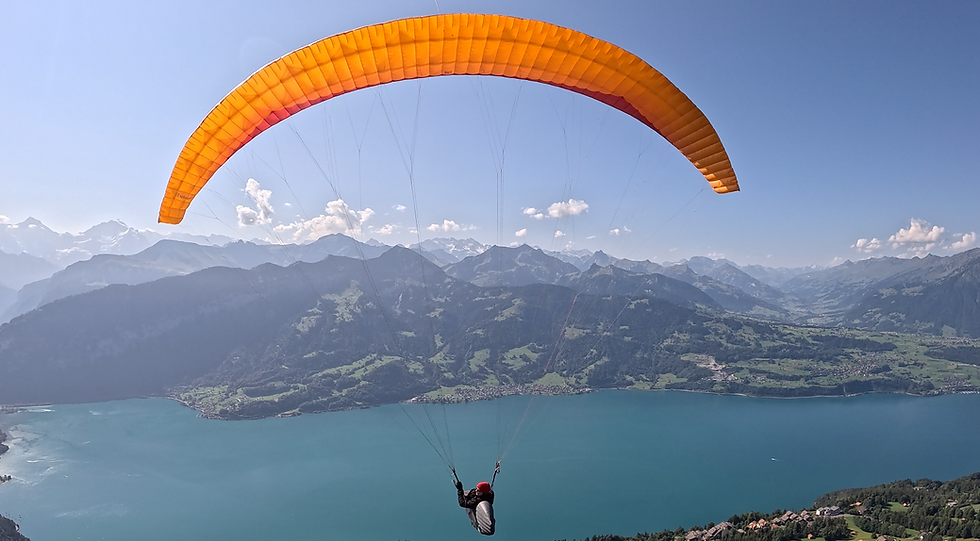Test flight Niederhorn 28.08.2024
- Andreas
- Sep 11, 2024
- 2 min read

On the weekend of 28 August 2024, our test pilots Koni and Lisa carried out an extensive test flight with the first fully integrated software version of the OCAP library.
The aim of the test flight was to check various elements:
- The generation and transmission of ADS-L radio packets.
- Receiving and decoding ADS-L radio packets.
- The calculation of collision warnings using the OCAP algorithm.
These goals were basically achieved. In addition, another set of realistic flight paths was recorded, including a video of the flight from the pilot Koni's perspective.
When analysing the recorded data, we found that the warning criterion presented in a previous blog post is not suitable in practice. It causes too many discontinuities. We have therefore revised the criterion and will present the new criterion in the next post.
The following video is intended to give an impression of the test flight. It shows the start of the test flight with two flight sequences on a collision course from the pilot Koni's perspective.
Another video is superimposed on the right-hand side of the video, which shows the result from the OCAP simulation environment. You can see two flight tracks there, with the green flight track of the pilot Koni in the foreground. (Note that the revised warning criterion is already being used in the simulation.)
Once every second, the OCAP algorithm checks whether other aircraft in the vicinity are on a collision course with the pilot Koni. If this is the case, an alarm is generated, whereby three alarm levels L1 (low) to L3 (high) are differentiated. The colour of the green flight track changes to yellow (L1), orange (L2) or red (L3), depending on how high the probability of collision is.
The colour of the black flight track also changes if it is the cause of the alarm. If other aircraft were involved, only the black flight track responsible for alerting the selected green flight track would change colour.
The alarms are displayed in detail at the bottom of the simulator output. For example, at 2:50 you can see that the flight path of pilot Lisa causes an alarm level 3 (highest level) for Koni. The indication ‘dt=25s’ means that the collision could occur 25 seconds in the future if the pilots maintain their flight path. This time decreases to 4 seconds by the time 3:10 and then the alarm disappears as a collision is no longer likely.
We are of course aware that test flights with paragliders are not sufficient to test the protocol in detail. However, they are a simple and cost-effective way of gaining initial experience and data for testing and improving all aspects of the protocol. As soon as the protocol works well enough, we will carry out more extensive tests with helicopters and motorised aircraft with our partners.

Comments